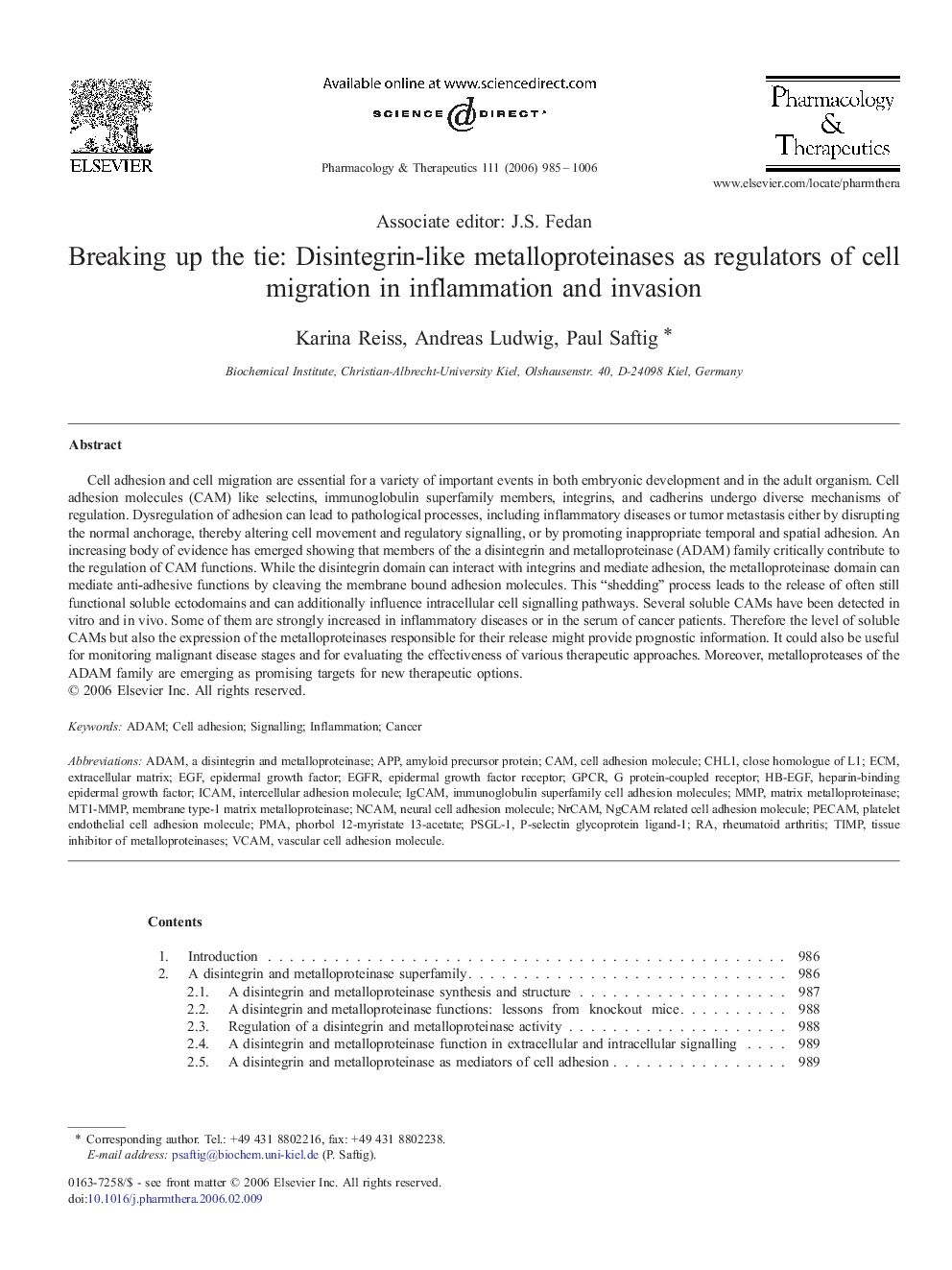| Article ID | Journal | Published Year | Pages | File Type |
|---|---|---|---|---|
| 2564306 | Pharmacology & Therapeutics | 2006 | 22 Pages |
Cell adhesion and cell migration are essential for a variety of important events in both embryonic development and in the adult organism. Cell adhesion molecules (CAM) like selectins, immunoglobulin superfamily members, integrins, and cadherins undergo diverse mechanisms of regulation. Dysregulation of adhesion can lead to pathological processes, including inflammatory diseases or tumor metastasis either by disrupting the normal anchorage, thereby altering cell movement and regulatory signalling, or by promoting inappropriate temporal and spatial adhesion. An increasing body of evidence has emerged showing that members of the a disintegrin and metalloproteinase (ADAM) family critically contribute to the regulation of CAM functions. While the disintegrin domain can interact with integrins and mediate adhesion, the metalloproteinase domain can mediate anti-adhesive functions by cleaving the membrane bound adhesion molecules. This “shedding” process leads to the release of often still functional soluble ectodomains and can additionally influence intracellular cell signalling pathways. Several soluble CAMs have been detected in vitro and in vivo. Some of them are strongly increased in inflammatory diseases or in the serum of cancer patients. Therefore the level of soluble CAMs but also the expression of the metalloproteinases responsible for their release might provide prognostic information. It could also be useful for monitoring malignant disease stages and for evaluating the effectiveness of various therapeutic approaches. Moreover, metalloproteases of the ADAM family are emerging as promising targets for new therapeutic options.
